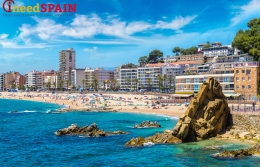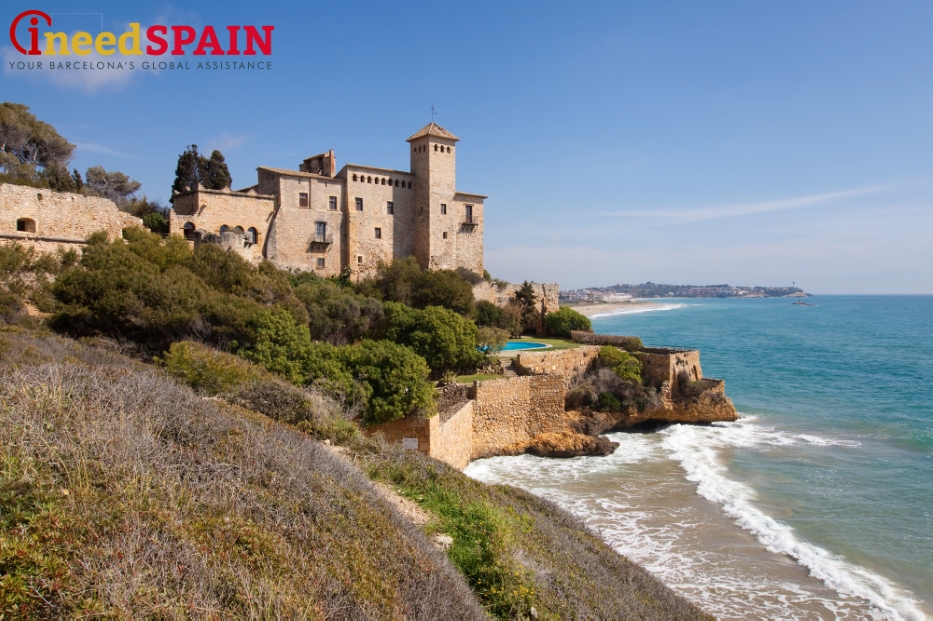
Costa Dorada is a coastal area that extends for almost 200 kilometers, from Vilanova i La Geltrú in the north to the town of Alcanar situated in the Ebro delta in the south. This coastal zone received its name for the tiny specks of golden sand covering the area. Until recently, the tranquility of this coast was left to the enjoyment of the locals. Thirty years ago, the first tourists began visiting these shores. These visitors wanted to enjoy the Costa Dorada attractions to the fullest, stopping by all the towns along the coast to spend hassle-free days on the shimmering, golden beaches. Fortunately, since this coast was inaugurated as a “tourist location” a relatively short time ago, there is still no aggressive construction of hotels and bars. Therefore, visitors can find more quiet bays here than in Costa Brava.
The Costa Brava coast connects the tiny resort towns in the area: Salou, La Pineda, Tarragona, Comarruga, and Calafel. Each of these spots has a different reputation. Every year, young people from all over Europe come to Salou to enjoy its active nightlife. La Pineda attracts families with its many gentle, rolling beaches, while Cambrils is known as a capital of taste. Tarragona is a historical center along the coast, featuring churches and old buildings, and the city itself is included on the UNESCO heritage list. Close to Tarragona and 14 kilometers from the city lies the small town of Reus, which acquired immense popularity as the birthplace of the famous architect Antonio Gaudi. When you have the chance to observe the natural areas of Costa Dorada, it quickly becomes clear where the “creator of Barcelona” received his inspiration. Reus is an ideal starting point for travel all over the coast, since the distances connecting it with the rest of the towns are rather small. Moreover, from every town of the Costa Dorada region, visitors can travel easily to Barcelona. For instance, it takes only 1 hour and 20 minutes to get from Salou to Barcelona by speed train.
One if the first considerations tourists encounter is where to stay in Costa Dorada. First of all, you should decide what type of vacation you prefer. Once decided, it will be easy to select a resort town along the coast where you can plan to spend most of your time. The best city apartments can be found in the historical areas of Tarragona and Reus. Those who desire a beach-style vacation will surely opt for one of the cozy houses in the fishing village of L’Ametlla-de-Mar, which is located within close vicinity of the main coastal towns and the Natural park, Delta del Ebro, with wild bays and small, hidden beaches. In addition to admiring the natural beauty that surrounds you, you will have the chance to go diving and sailing. Many travelers like to visit Salou in large groups because visitors can rent whole luxury villas in this town.
Costa Dorada attractions
When planning a vacation in Costa Dorada, it is of utmost importance to create a list of sights that are mandatory for visiting in order to experience the real essence of the local atmosphere:
- Port Aventura
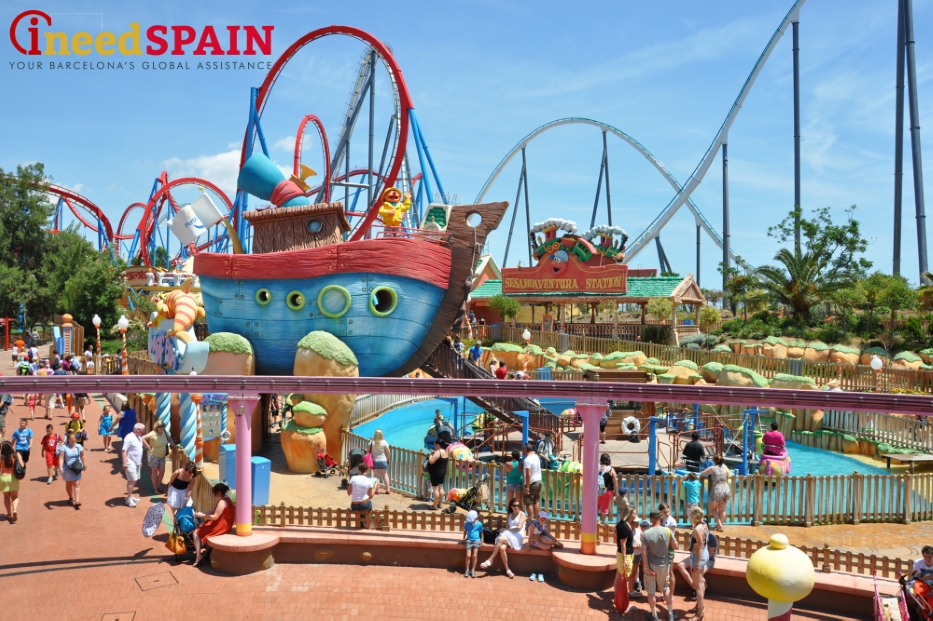
Even those who have never visited Spain seem to know about the largest entertainment park in the south of the country. About five million tourists come here on an annual basis, making this site one of the most visited locations in the country. Hundreds of attractions lie on a vast territory of 117 hectares. The amusement park itself is divided into 6 thematic zones, five of which are dedicated to historical civilizations and ensure “complete immersion” into the past. The sixth zone is a territory for kids that opened just several years ago. Although there are no extreme slides here, children are sure to find lots of entertaining activities. For this reason, Port Aventura remains one of the key locations in Costa Dorada to offer plenty of attractions for the whole family. Apart from the amusement park, the Port Aventura grounds feature numerous beach clubs, restaurants, hotels, and golf courses.
- Gaudi Center in Reus
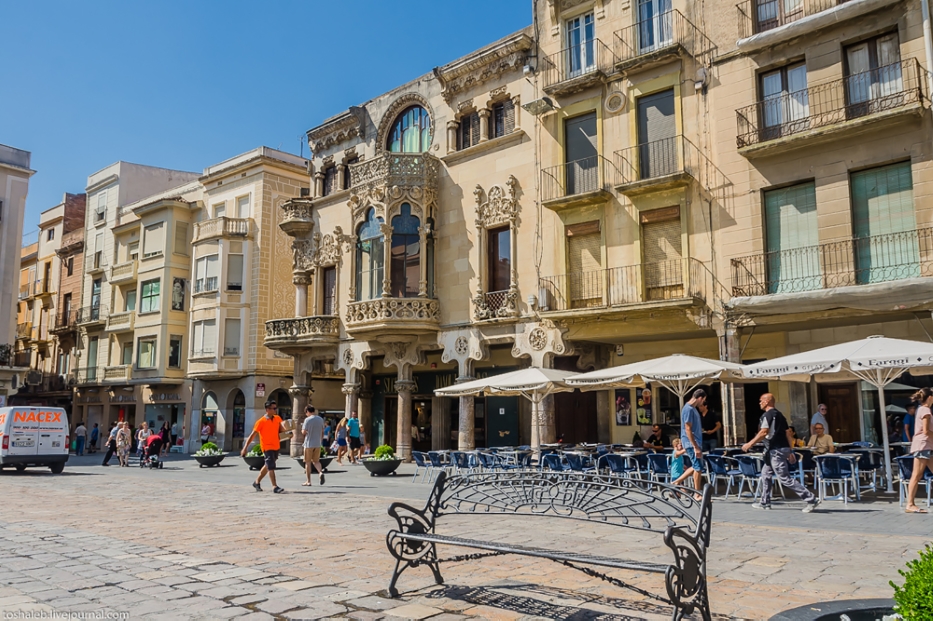
More than a hundred years ago, the world-famous architect Antonio Gaudi was born in Reus, a town with a population of just 100,000. The Gaudi Center in Reus is among the key landmarks of Costa Dorada. The museum building was erected in a hi-tech style and features a 4-story building that stands out significantly from the rest of the local landscape. The main exposition at the museum includes models of Gaudi’s prominent works (some of which you can even touch), historical and biographical materials, a recreated architect’s workshop, and a movie about the life and work of Gaudi that plays on a big screen.
- Roman aqueduct
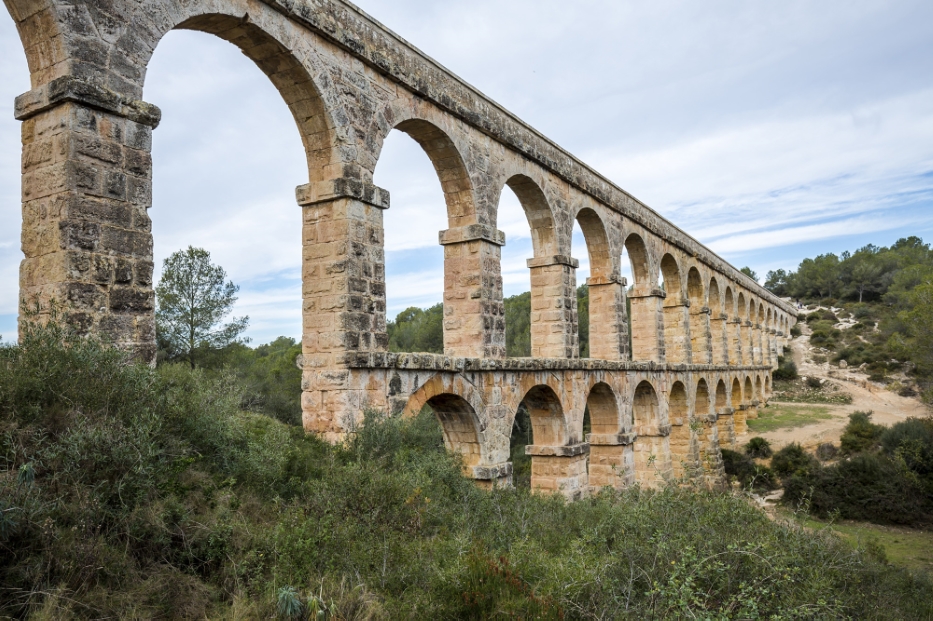
Those interested in history and archeology, by all means, must visit the Roman aqueduct. The aqueduct lies 4 kilometers away from Tarragona and is protected by UNESCO as a cultural heritage site. This landmark of Costa Dorada really catches the eye when compared to other attractions, for it boasts a truly ancient history. Long ago, the water from the Francoli river flowed via this amazing construction to Tarragona. In medieval times, the real purpose of the aqueduct was obliterated, and the “strange” construction became known as the “Devil’s bridge.” Thus, the “Devil’s Bridge” is 220 meters long, with a gutter height of 27 meters. Today, visitors can walk on top of it. A large ecological and historical park lies nearby.
- Amphitheater of Tarragona
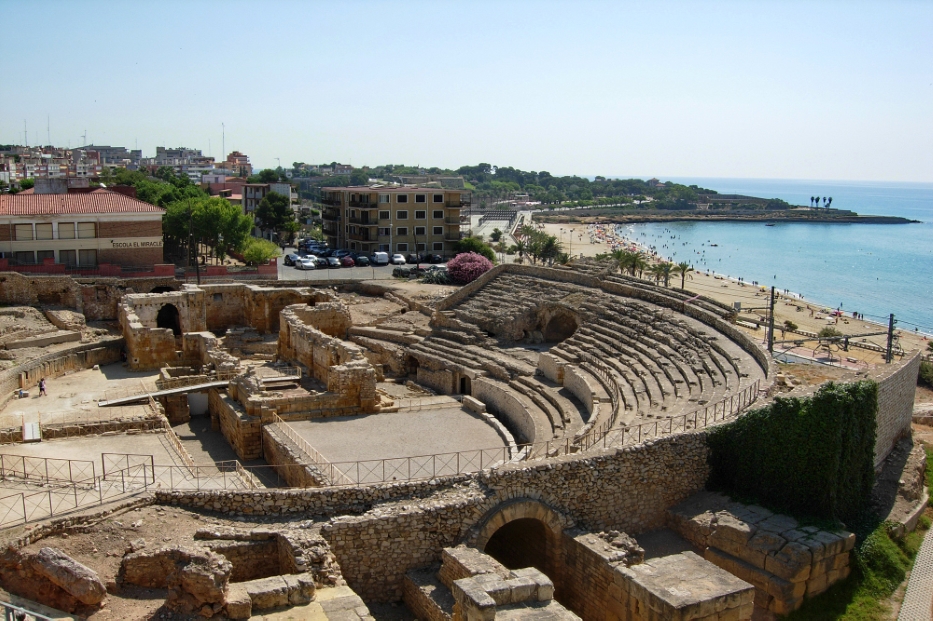
The amphitheater of Tarragona is another antique site with a breath-taking history. This landmark of Costa Dorada is a recent discovery of Spanish archeologists. The magnificent amphitheater could host up to 13,000 people and was built in the 13th century in the residence of the Roman Emperors August and Adrian. This was the exact site where bloody gladiators’ battles took place, and the preserved tribunes, arena, and main gates provide the major evidence of these events. In the times of persecution against Christianity, the arena of the amphitheater became the site of priests’ executions. In the year 259, the bishop Fructuosa was burnt here at the stake. From that time on, every year on 21 January, the residents of Tarragona light candles in all the churches in memory of his martyrdom.
- The Ebro Delta
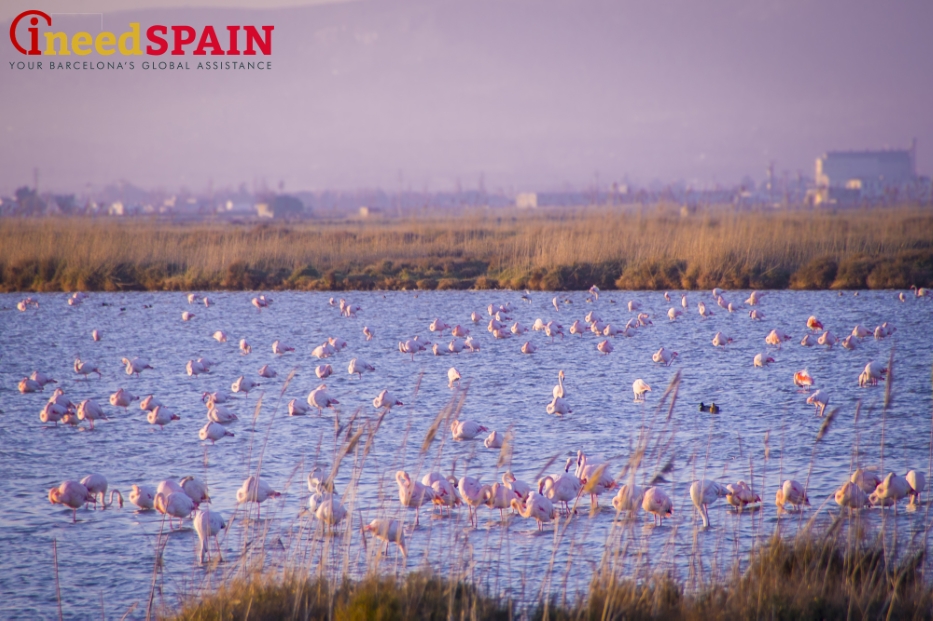
This place definitely should be included in the “must-see” list of sites in the Costa Dorada region. The Spanish consider this delta occupying 300 square meters – and the spot where the Ebro flows into the Mediterranean Sea - the most beautiful natural reserve in the country. The striking biodiversity and warm sandy dunes and water where visitors can swim and sunbathe attract those who love nature and tranquility. For several decades already, the Ebro delta has been a protected zone. However, visitors also can ride a motorboat and even engage in fishing sports here. There is such a great number of fish in the delta (400 species), that fish can be caught with the hands, a skill taught right on the riverbank. The fishers return their catch back to the river directly. This natural paradise will offer you the splendid chance to see rare migrating birds, flamingos, and majestic herons, and to enjoy the picturesque landscape of the delta from the numerous cafeterias scattered all over the coast.
The specialists of INEEDSpain service center are always ready to assist you in planning your travel routes all over Spain. Moreover, we are here to help you book airline tickets and accommodations, as well as help you discover the most interesting and non-touristic places for your ideal vacations.




